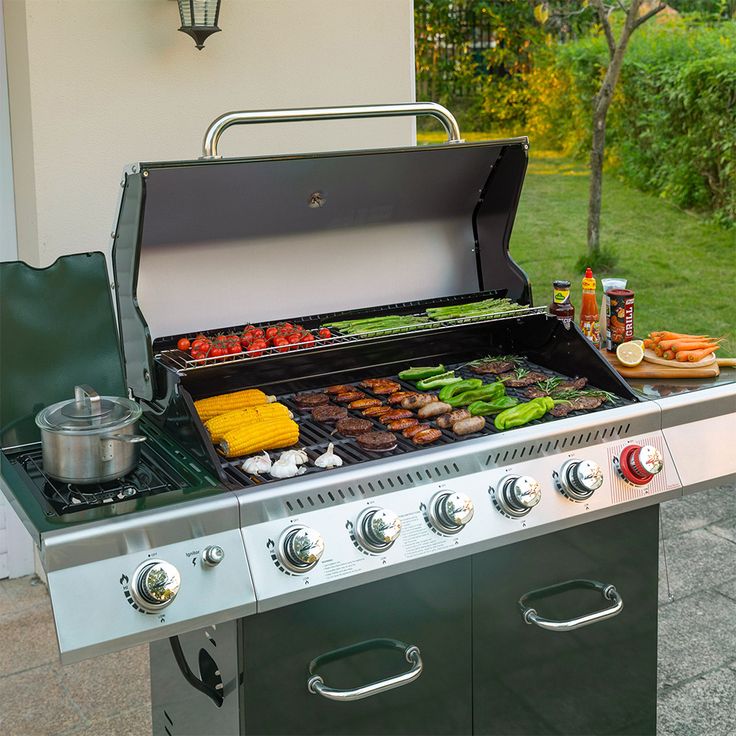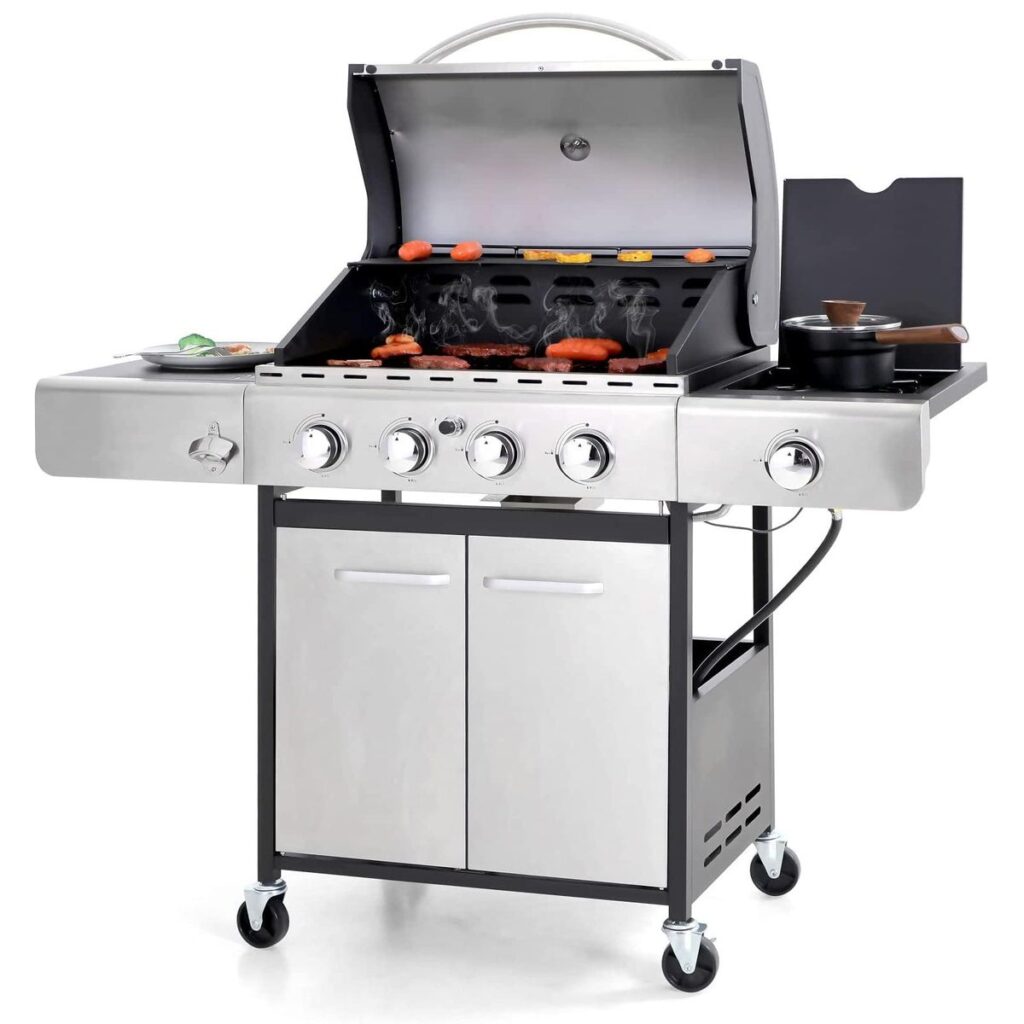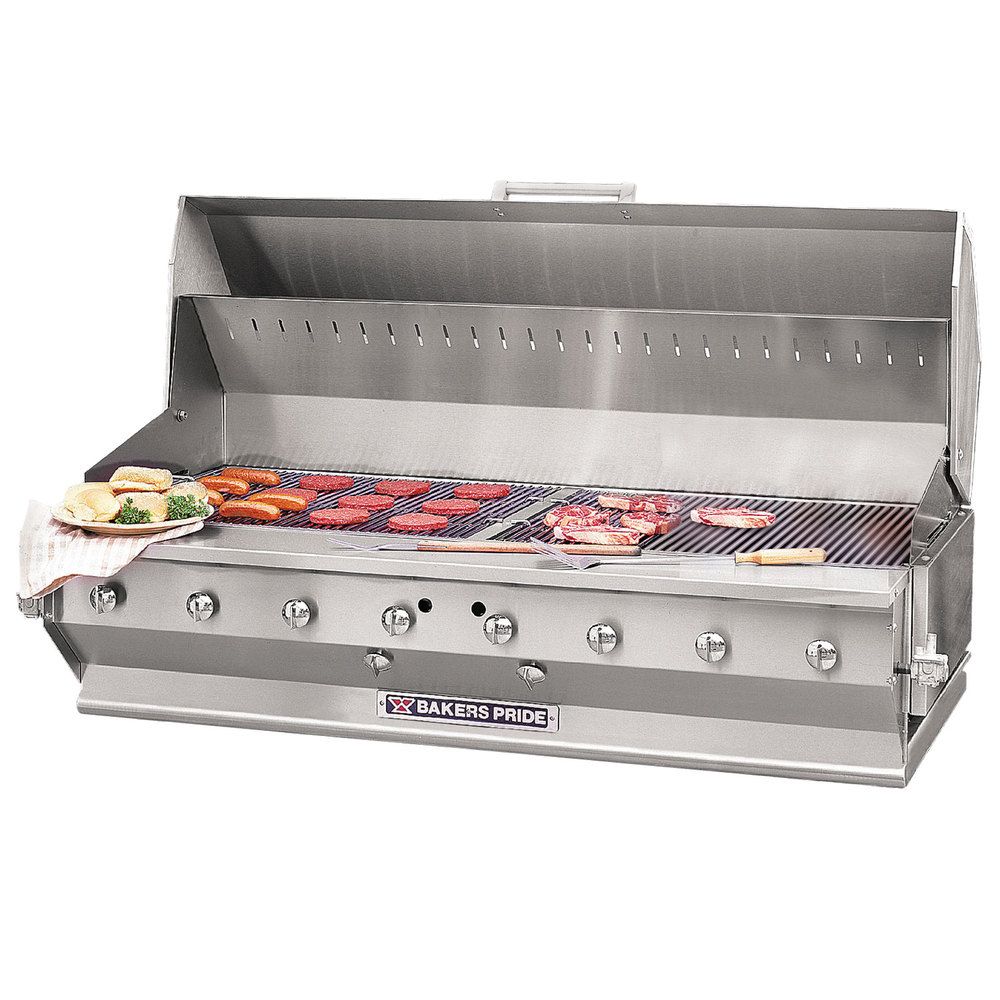A hot gas grill left on can waste fuel and cause danger. Many people forget simple steps that keep their homes safe and grills lasting longer.
To turn off a gas grill safely, shut the burners first, close the gas tank or line, let the grill cool fully, and clean surfaces before covering or storing.
These steps protect families, reduce fire risks, and make sure the grill works well next time. The following guide explains each step in clear detail.
Why should you turn off a gas grill properly?
Not turning off a grill the right way can cause fires, leaks, and damage. A small mistake can turn into a big problem.
Proper shutdown avoids leaks, prevents explosions, and makes grilling safer for you, your family, and your property.

Turning off a gas grill properly is not only about safety, but also about money and time. When burners are left on or gas is left flowing, you waste fuel. Over weeks, this becomes costly. More importantly, leaks can spread propane or natural gas in the air. Gas is invisible but highly flammable. Even a small spark from a lighter or electric switch may ignite it. Families with children or pets are at even greater risk because they may touch the knobs or hoses. Proper shutdown protects the grill itself as well. If heat stays inside too long, it can weaken metal, rust surfaces, or damage parts. Safe routines extend the lifespan of your grill. Simple steps at the end of each cookout help avoid long-term repair costs and accidents.
What is the safest way to turn off burners?
People often argue about order. Some close the tank first, while others shut burners first. The order matters.
The safest method is turning burners off first, then closing the tank. This clears gas in the line and prevents pressure buildup.
When burners go off first, the gas already inside the hose burns away. This leaves the line empty before you close the tank. If you close the tank first, gas stays trapped under pressure. Over time, fittings and hoses weaken. Leaks form when this stress continues. Using burners first reduces these risks. It also gives you a chance to check all knobs are in the off position. That way, the grill cannot light by accident later. Cleaning is easier too. With burners off, grates are still warm, so grease scrapes off faster.
Steps for safe shutdown
| Step | Action | Why it matters |
|---|---|---|
| 1 | Turn all burner knobs off | Stops flame and clears line |
| 2 | Close gas tank valve | Seals off supply |
| 3 | Check knobs and hoses | Confirms no leaks remain |
This simple order of steps creates a safer and longer-lasting grill routine.
Should you close the gas tank after grilling?
Many people believe burners alone are enough. This is a mistake that increases danger.
Always close the propane tank or natural gas supply after grilling. This stops leaks and keeps the grill safe until the next use.
Closing the tank is not optional. Even with burners off, an open tank still pushes gas toward the grill. Hoses and valves are never 100% tight. Small leaks happen often, and they may not smell strong until gas builds up. This buildup can cause explosions or poisoning if it happens near a house or inside a garage. Closing the valve reduces stress on regulators and hoses, slowing wear and preventing damage. Fuel savings are another reason. A small leak may waste hours of propane over weeks. By twisting the valve shut, you prevent both danger and waste. This simple action takes seconds and is the most reliable way to secure your grill.
How long should you wait before covering a gas grill?
A grill looks cool from outside while it is still hot inside. Covering too early is risky.
Wait 30 to 60 minutes before covering. This avoids melting, burns, and heat trapped under the cover.

Covers protect grills from rain, dust, and animals. Yet if you cover a hot grill, you can damage both grill and cover. Heat trapped inside may warp metal or burn the fabric. Plastic covers may melt onto the surface. Moisture trapped inside may also cause rust and mold. For safety, wait until the grill feels completely cool to touch. A good rule is 30 minutes for smaller models and up to 1 hour for large ones. While waiting, clean the grates while they are still warm. That way, grease comes off easily. After full cooling, wipe down surfaces and then cover. This habit keeps the grill in good shape and ready for long use.
What mistakes do people make when turning off gas grills?
Mistakes are common when people are tired after cooking. These errors can cause damage or danger later.
Typical mistakes include leaving the tank open, shutting the tank first, covering too early, and forgetting to clean or check for leaks.
One of the biggest mistakes is leaving the propane tank open. Even if burners are off, gas may leak. Another is shutting the tank before the burners, which leaves gas trapped under pressure in hoses. This weakens seals and may create leaks. Covering a hot grill is another mistake, leading to damaged covers or trapped heat. Forgetting to clean is also risky. Grease buildup is the top cause of flare-ups. A small mistake today can become a large hazard tomorrow.
Common shutdown mistakes and fixes
| Mistake | Why it is risky | Fix |
|---|---|---|
| Leaving tank open | Gas leaks, fire risk | Always close valve |
| Closing tank first | Pressure left in line | Shut burners first |
| Covering hot grill | Heat damage | Wait until cool |
| Skipping cleaning | Grease fires | Brush grates warm |
By avoiding these, you keep grilling safe and stress-free.
How do you clean a gas grill before storing it?
Cleaning right after use saves effort and reduces risks later.
Brush warm grates, empty grease trays, and wipe down surfaces. This prevents buildup, pests, and flare-ups in future grilling.

Cleaning a grill takes little time but adds years to its life. Grates are easiest to clean while still warm. Grease comes off faster with a stiff brush. Empty grease trays after each session to avoid smoke and pests. Wipe the exterior with a damp cloth to stop stains and rust. Regular cleaning prevents animals from being drawn by food smells. For deeper maintenance, check burners for clogs and hoses for cracks. Clean grills also cook better. Heat spreads evenly without old grease blocking flames.
Quick cleaning checklist
- Brush grates when warm
- Empty grease tray
- Wipe exterior surfaces
- Check hoses and burners
This routine makes grilling safer and easier every time.
What is the best way to store a gas grill for next use?
Storage choices affect both safety and lifespan. Wrong storage can ruin parts and increase risks.
Keep grills outside in dry areas, close the tank, use a cover, and never store propane indoors.
Good storage keeps your grill safe. Always store outdoors or in a ventilated shed. Never keep propane inside homes or garages. Close the tank valve fully. For long storage, disconnect the tank. Place the grill on a stable, dry surface to avoid moisture. Use a cover to protect against weather and dust. Heavy covers with straps are better in windy areas. Store tools nearby but separate from greasy trays to avoid pests. Correct storage ensures your grill is safe and ready when you want it again.
Conclusion
Safe shutdown prevents accidents, saves fuel, and makes your gas grill last longer.
FAQs
Can you leave propane connected after cooking?
Yes, if the valve is closed. For long storage, disconnect to reduce pressure on hoses and fittings.
How long should a propane tank cool before storage?
Once the grill cools, tanks are safe to store. Heat does not stay in tanks the way it does in grills.
Can a gas grill explode if left on?
Yes. If burners stay on or leaks occur, gas buildup can ignite. Always shut off burners and close the valve.
Is it safe to store a gas grill on a balcony?
Only if the balcony is open and well-ventilated. Never use or store propane in enclosed or high-rise indoor areas.
How do you know if the grill is fully off?
Check all knobs are off, the flame is gone, and the tank valve is closed tightly. No smell of gas should remain.
What should you do if you smell gas near the grill?
Close the valve right away, move the tank outdoors if safe, and call for service if leaks continue.
How often should hoses be checked for leaks?
Check once a month. Apply soapy water to fittings. If bubbles appear, replace the hose or tighten the fitting.
